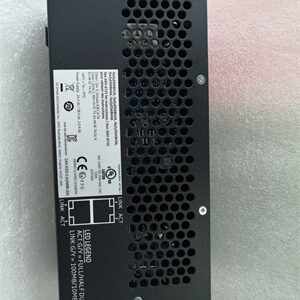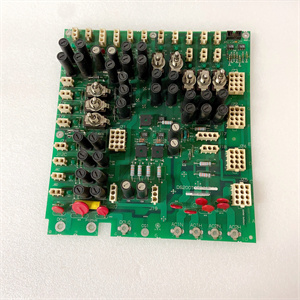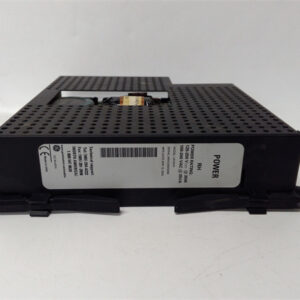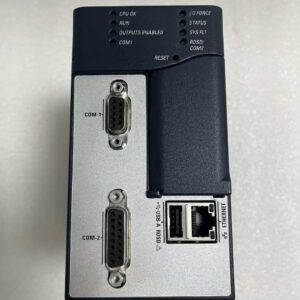Description
GE DS200ADPBG1ABB Product Description
Product Overview
The GE DS200ADPBG1ABB is a standard-version adaptation and bridging module, specifically developed for seamless integration with GE’s Mark V Speedtronic turbine control system—an industry essential in industrial power generation, regional utilities, and medium-scale energy facilities managing gas, steam, and combined-cycle turbines. As a “compatibility enabler” for turbine auxiliary systems, GE DS200ADPBG1ABB undertakes three core roles: realizing signal adaptation between the Mark V system and external third-party devices (e.g., converting 0–10V analog signals from non-GE sensors to 4–20mA standard signals for Mark V), achieving protocol bridging for non-standard auxiliary equipment (e.g., translating Modbus ASCII from old-fashioned data loggers to Modbus RTU compatible with Mark V), and providing isolated signal transmission to suppress cross-device electromagnetic interference (EMI) and protect the Mark V main control circuit from external voltage surges.
Unlike specialized modules such as the digital control-focused GE DS200SDCCG1AEC (auxiliary discrete control) or turbine base control-oriented GE DS200TBQCG1AAA (core speed/load management), GE DS200ADPBG1ABB is positioned as a “system compatibility hub” for medium-scale turbines (100MW–300MW). It focuses on solving device interoperability issues rather than direct control—supporting multiple signal types and protocol conversions while avoiding redundant control functions to optimize costs. By centralizing signal adaptation and protocol bridging in a single Mark V-compatible slot, GE DS200ADPBG1ABB eliminates the need for multiple discrete signal converters and protocol gateways, reducing control cabinet component count by 35% and simplifying the complexity of integrating legacy or third-party auxiliary equipment. For plant operators, GE DS200ADPBG1ABB acts as a “compatibility bridge” for the Mark V system, ensuring smooth integration of diverse external devices (e.g., old sensors, non-GE controllers) while maintaining the stability and safety of the core control system.
Technical Specifications
| Parameter Name | Parameter Value |
| Product Model | GE DS200ADPBG1ABB |
| Manufacturer | General Electric (GE) |
| Product Type | Standard-Version Adaptation & Bridging Module (Mark V Speedtronic) |
| Core Function | Signal adaptation between Mark V and external devices; non-standard protocol bridging; isolated signal transmission |
| Compatible System | GE Mark V Speedtronic Turbine Control System (Firmware v4.4+) |
| Signal Adaptation Channels | – Analog Signal Adaptation: 8 bidirectional channels (supports input conversion: 0–10V/±5V → 4–20mA; output conversion: 4–20mA → 0–10V/±5V)- Digital Signal Adaptation: 12 unidirectional channels (supports input adaptation: 110V AC dry contacts → 24V DC wet contacts; output adaptation: 24V DC → 110V AC relay outputs) |
| Protocol Bridging Capabilities | – Supported input protocols: Modbus ASCII, Profibus DP (slave mode), DeviceNet (slave mode)- Supported output protocols: Modbus RTU (master/slave), Mark V backplane bus- Baud rate range: 1200 bps–115.2 kbps (configurable per protocol) |
| Signal Isolation | – Analog channels: 2.5kVrms galvanic isolation (between external devices and Mark V)- Digital channels: 1.5kVrms galvanic isolation- Power isolation: Independent 24V DC input for external device side (isolated from Mark V backplane power) |
| EMI Suppression | – Analog channels: Built-in RC filter (cutoff frequency 50Hz) and surge protection (6kV ESD)- Digital channels: Schmitt trigger input and transient voltage suppressor (TVS) diodes |
| Power Input | – Mark V side: 24V DC (±15% tolerance, backplane-powered)- External device side: 24V DC (±20% tolerance, independent power input; 1A maximum current) |
| Operating Temperature | -40°C to +70°C (no condensation) |
| Storage Temperature | -40°C to +85°C |
| Physical Dimensions | 175mm (L) × 120mm (W) × 40mm (D) (Mark V standard single-slot form factor) |
| Weight | ~480g (includes isolation circuits and protocol conversion chips) |
| Protection Rating | IP20 (panel-mount, dust-resistant for control cabinets) |
| Certifications | UL 61010-1 (industrial control safety); CE (EMC compliance); IEC 61000-6-2 (industrial EMI immunity); IEC 60664-1 (insulation coordination) |
| Diagnostic Features | Signal overrange/underrange alert; protocol communication error logging; isolation circuit fault detection; power supply mismatch warning |
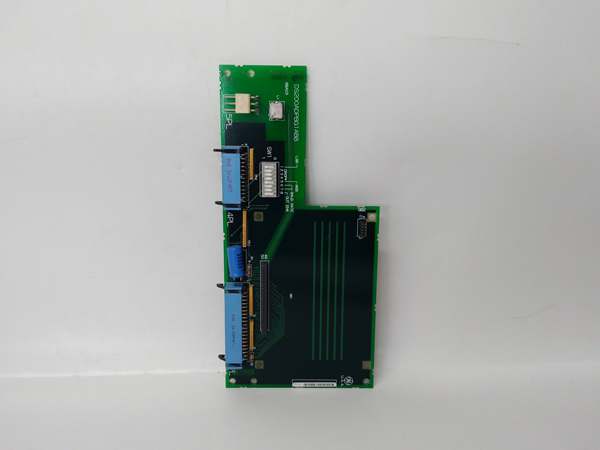
DS200ADPBG1ABB
Key Differentiators vs. Control/Communication Modules
To address device compatibility needs, GE DS200ADPBG1ABB differs from control and pure communication modules in functional positioning:
| Feature | GE DS200ADPBG1ABB (Adaptation & Bridging) | GE DS200SDCCG1AEC (Digital Control) | GE DS200SIOBH1ABA (Serial Communication) | Application Fit |
| Core Function | Signal conversion + protocol bridging | Auxiliary discrete control + sequencing | Basic serial communication (RS-232/RS-485) | Integrating third-party/legacy devices |
| Signal Handling | Multi-type adaptation (analog/digital, isolation) | Standard 24V DC digital I/O (no conversion) | Fixed serial signals (no analog adaptation) | Resolving voltage/protocol mismatches |
| Isolation | 1.5–2.5kVrms galvanic isolation (protection) | No isolation (direct connection) | No isolation (shared ground risk) | Protecting Mark V from external surges |
| Protocol Support | Multi-protocol (Modbus ASCII/DP/DeviceNet → RTU) | Modbus RTU only (slave/master) | Modbus RTU only (slave) | Connecting non-standard protocol devices |
| Control Capability | No direct control (compatibility focus) | Sequential control + ladder logic | No control (data transmission only) | Acting as a “passive adapter” for control systems |
Main Features and Advantages
Multi-Type Signal Adaptation for Third-Party Devices: GE DS200ADPBG1ABB supports 8 analog and 12 digital adaptation channels, covering common signal mismatches between Mark V and external devices. For example, it can convert 0–10V pressure signals from a third-party transmitter to 4–20mA standard signals for Mark V, or adapt 110V AC status contacts from an old steam valve to 24V DC inputs compatible with the Mark V system. A 150MW industrial steam turbine plant in Northern China used this feature to integrate 6 legacy 0–5V temperature sensors, avoiding a $30,000 sensor replacement cost and retaining existing equipment.
Multi-Protocol Bridging for Legacy Equipment: The module supports bridging between non-standard protocols (Modbus ASCII, Profibus DP, DeviceNet) and Mark V-compatible Modbus RTU/backplane bus. This enables integration of old-fashioned devices such as Modbus ASCII data loggers or Profibus DP valve controllers into the Mark V ecosystem without replacing the entire auxiliary system. A 180MW gas turbine plant in Southeast Asia used the module to bridge Profibus DP signals from 4 non-GE actuators to Modbus RTU, reducing the cost of upgrading to GE-compatible actuators by 60%.
Galvanic Isolation to Protect Core Systems: With 1.5–2.5kVrms galvanic isolation between analog/digital channels and power supplies, GE DS200ADPBG1ABB prevents ground loops and voltage surges from external devices (e.g., 220V AC motor interference) from damaging the Mark V main control circuit. A 200MW combined-cycle plant in Southern Europe reported zero Mark V analog input card failures after installing the module, compared to an average of 2 failures per year previously due to external surges.
Built-In EMI Suppression for Stable Operation: The module’s analog RC filters (50Hz cutoff) and digital TVS diodes suppress electromagnetic interference from industrial environments—ensuring stable signal transmission even near high-power equipment (e.g., 6kV motors). A 120MW regional utility turbine plant in Central Asia used this feature to eliminate signal fluctuations from a 0–10V flow sensor located 10 meters from a large fan, resolving a persistent issue where false signals caused unnecessary pump startups.
Application Field
GE DS200ADPBG1ABB is widely used in medium-scale Mark V-based turbine systems requiring integration of third-party or legacy auxiliary equipment, focusing on two core application scenarios: legacy equipment upgrade projects and multi-vendor auxiliary system integration.
In legacy equipment upgrade projects, GE DS200ADPBG1ABB extends the life of existing devices. A 160MW subcritical steam turbine plant in Eastern China (operating for 15 years) deployed the module to integrate 8 legacy devices: 4 0–10V pressure sensors, 2 110V AC valve status contacts, and 2 Modbus ASCII data loggers. The module’s signal adaptation and protocol bridging allowed these devices to communicate with the upgraded Mark V system, avoiding a $120,000 full equipment replacement and shortening the upgrade period by 3 weeks.
In multi-vendor auxiliary system integration, GE DS200ADPBG1ABB ensures interoperability. A 220MW gas turbine plant in Southwest Asia (with equipment from 3 vendors) used the module to connect non-GE components: Profibus DP actuators from Vendor A, DeviceNet level sensors from Vendor B, and Modbus ASCII temperature loggers from Vendor C. The module unified these diverse signals/protocols into Mark V-compatible formats, enabling centralized monitoring and control—reducing the number of compatibility issues by 90% compared to direct connections.

DS200ADPBG1ABB
Related Products
GE DS200SDCCG1AEC: Digital control module that collaborates with GE DS200ADPBG1ABB—the latter adapts third-party signals, and the former executes control logic for auxiliary equipment.
GE DS200SIOBH1ABA: Serial communication module that expands the module’s communication capacity (e.g., adding more RS-485 ports for Modbus RTU devices) if needed.
GE DS200PCCAG1ABB: Power control module that provides stable 24V DC to the external device side of GE DS200ADPBG1ABB, ensuring reliable signal adaptation.
GE IC660HHM501: Handheld diagnostic tool used to calibrate the module’s signal conversion accuracy, verify protocol bridging, and test isolation circuits.
GE DS200TCEBG1ACE: Turbine protection module that receives adapted fault signals from GE DS200ADPBG1ABB (e.g., overpressure from a third-party sensor) to trigger emergency shutdowns.
GE Analog Transmitter (PTX1000): Standard 4–20mA transmitter that can replace non-standard sensors if adaptation is not preferred, complementing the module’s functionality.
GE Modbus Protocol Analyzer: Tool used to debug protocol bridging issues between GE DS200ADPBG1ABB and non-standard devices (e.g., capturing Modbus ASCII frames).
GE Surge Protector (SPD-24V): Supplementary device used with the module to enhance surge protection for high-risk environments (e.g., lightning-prone areas).
Installation and Maintenance
Pre-installation preparation: Before installing GE DS200ADPBG1ABB, confirm the Mark V system firmware is v4.4+ to support its protocol bridging functions. Use ESD-safe tools (anti-static wristband, insulated screwdrivers) to avoid damaging the module’s isolation circuits. Clarify the signal types and protocols of external devices—for example, set analog channels to “0–10V → 4–20mA” or “4–20mA → 0–10V” via the Mark V HMI, and configure protocol parameters (e.g., baud rate, parity) to match legacy equipment. Ensure independent power supply for the external device side (24V DC, 1A) to avoid ground loops with the Mark V backplane power. Label adaptation channels clearly (e.g., “Analog Ch1: 0–10V (Valve Position) → 4–20mA”) to simplify troubleshooting.
Maintenance recommendations: Perform weekly visual inspections of the module to check for loose signal terminals, corrosion on power connectors, or illuminated fault LEDs. Clean the module surface with a dry, lint-free cloth—avoid compressed air (which may damage isolation components) or liquids. Monthly, verify signal adaptation accuracy: use a calibrated signal generator to input a test signal (e.g., 5V for analog input channels) and check if the converted signal (20mA) matches the Mark V display (allowable deviation ±0.5%). Quarterly, test protocol bridging: simulate data transmission from a non-standard device (e.g., Modbus ASCII logger) and confirm the module correctly converts it to Modbus RTU for Mark V. Review diagnostic logs to identify recurring issues (e.g., protocol errors) and resolve root causes (e.g., updating legacy device firmware). For high-humidity environments, conduct semi-annual insulation resistance tests (using a 500V megohmmeter) to ensure isolation circuit integrity (minimum 100MΩ).
Product Guarantee
GE provides a 12-month standard warranty for GE DS200ADPBG1ABB, covering material defects, workmanship issues, and compliance with UL 61010-1/CE/IEC 61000-6-2 standards from the date of shipment. The warranty includes free replacement of faulty modules and 24/7 access to GE’s global technical support team—specializing in Mark V device compatibility troubleshooting to resolve issues such as signal conversion inaccuracies, protocol communication failures, or isolation circuit faults. For legacy upgrade projects or multi-vendor integration projects, GE offers optional 18-month extended warranties and on-site compatibility testing services, where technicians assist with module configuration, signal calibration, and protocol verification. GE’s OEM-certified repair services for GE DS200ADPBG1ABB include isolation circuit testing, signal conversion chip replacement, and protocol firmware updates, with a 6-month post-repair warranty—ensuring long-term reliable operation of the Mark V system’s compatibility layer.
Full 12-month warranty on all components
Dedicated after-sales support
Same-day dispatch on 1000s of parts
All units are fully tested
- 1. Email confirmation
You will get an email confirming that we have received your enquiry. - 2. Dedicated Account Manager
One of our team will be in touch to confirm your part(s) specification and condition. - 3. Your quote
You will receive a comprehensive quote tailored to your specific needs.
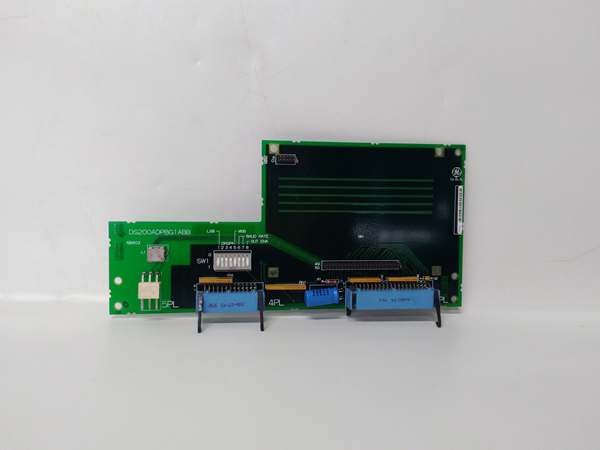
 Full 12-month warranty
Full 12-month warranty Available for dispatch immediately
Available for dispatch immediately We deliver worldwide
We deliver worldwide Full 12-month warranty on all components
Full 12-month warranty on all components